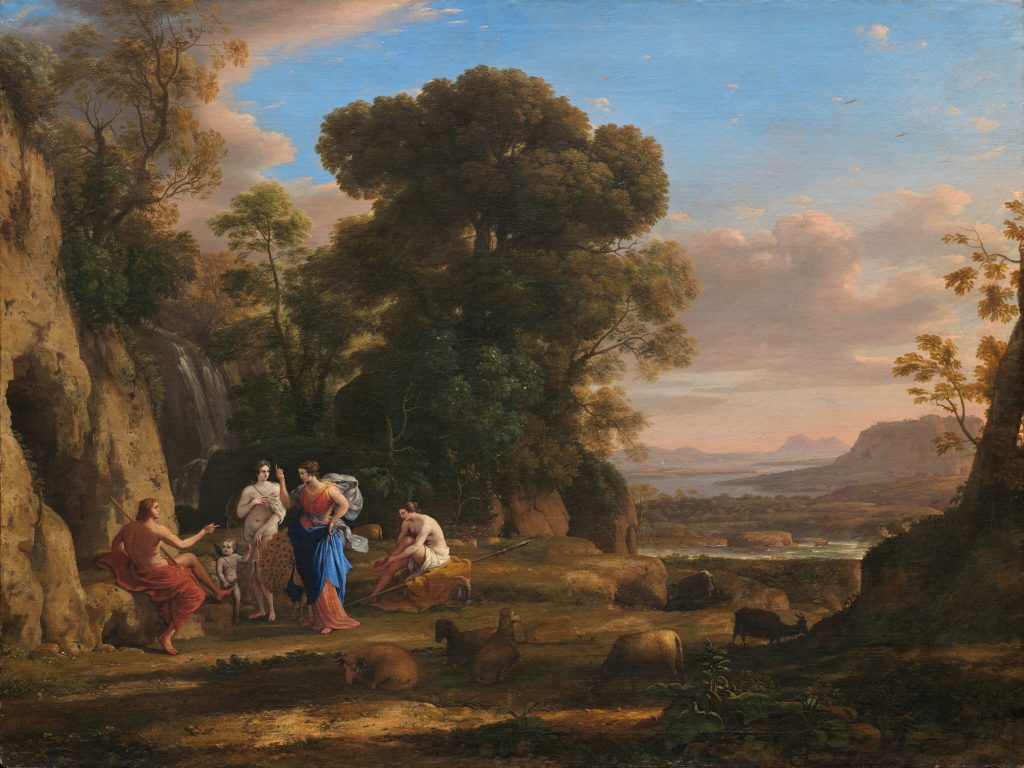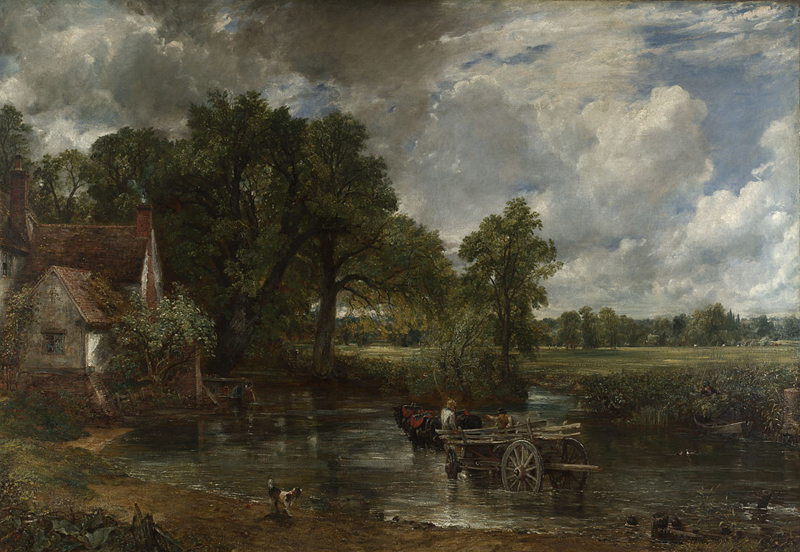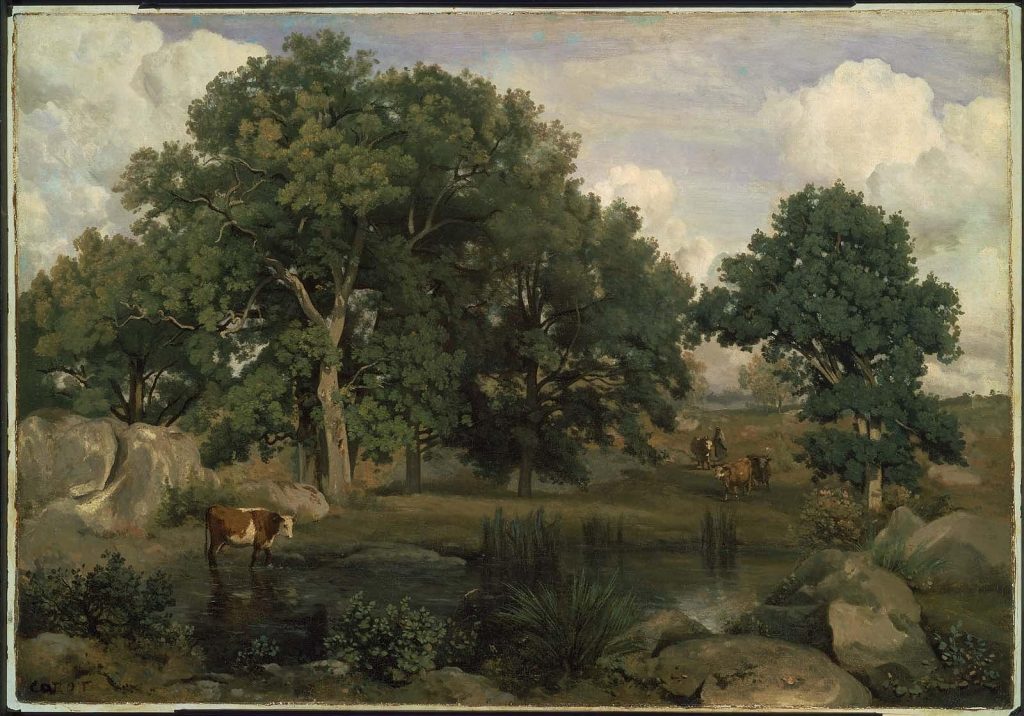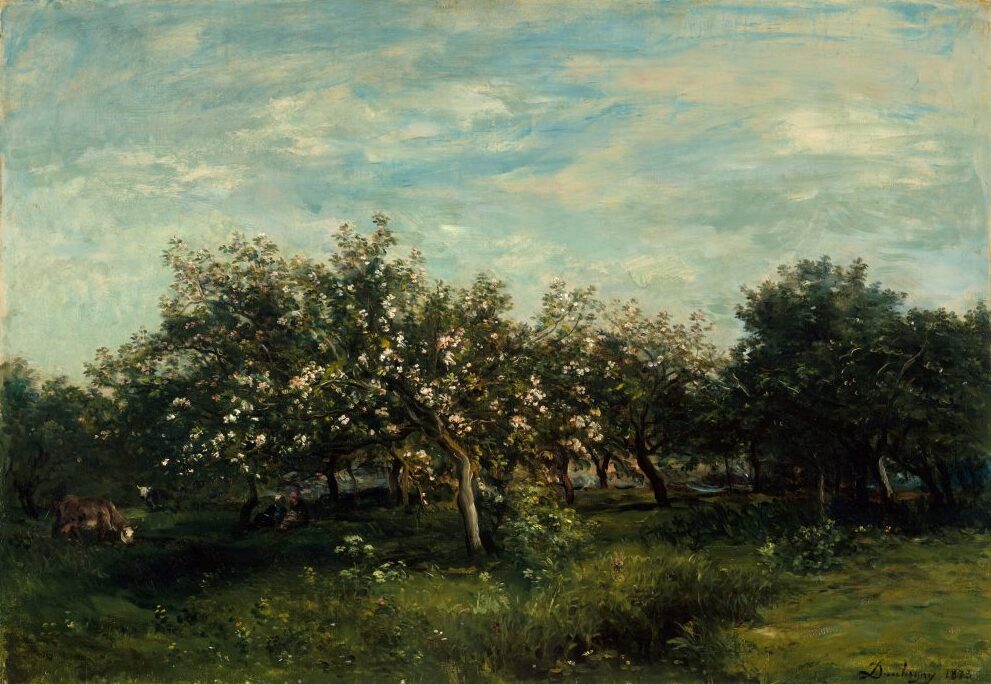Apollo and Daphne in 5 Artworks
From Ancient Rome to the Renaissance and Rococo, the timeless appeal of the Apollo and Daphne myth spans centuries of artistic expression. The myth...
Anna Ingram 30 January 2025
During the 19th century, the most promising artists trained at the Royal Academy of Painting and Sculpture in Paris. The Academy taught its pupils the works of the Old Masters. Artists in the making were encouraged to adopt classical ideals in their paintings. However, a group of them believed in the legitimacy of the landscape as an independent genre. Therefore they traveled to the outskirts of Paris in a venture to observe nature. Turning their attention to the beauty of the countryside, they formed the Barbizon school.
In the early 19th century, any aspiring painter who yearned for success enrolled themselves at the National School of Fine Art (a branch of the Royal Academy of Painting and Sculpture). There, artists followed a strict curriculum. They focused on legitimate subjects such as historical and mythological themes. Since the Neoclassical style of painting was popular, pupils depicted scenes using minimal color, straight lines, and clearly defined forms.

Throughout the 18th and early 19th centuries, the landscape was not considered worthy enough to be a subject in its own right. Therefore, artists used it as a backdrop for idealized Biblical scenes. Throughout this period, painters who developed a passion for nature looked up to the French painter Claude Lorrain. Born in 1600, Lorrain settled in Rome and used the countryside to accompany his classical narratives. His paintings laid down an idealized way of painting nature for his successors to pursue.

In 1816, the school established a scholarship called Prix de Rome to enable art students to study a term at the French Academy in Rome. In order to determine the winner, young artists had to take to two tests. Firstly, candidates were required to paint a classical scene surrounded by nature. This was not the difficult part though, as they were already practicing the works of the Old Masters. The second test, however, was the challenging one. They needed to paint a specific tree in detail. Their studies did not evolve around observing nature and as a result, they did not have enough practice.

In 1824, English painter John Constable found an opportunity to exhibit his works abroad. His six-foot painting (182 cm) The Hay Wain went on display at the French Salon. Revealing the beauty of the English countryside, it had a significant impact on Parisian artists. At the same time, inspired students started paying visits to the Louvre where they could study 17th-century Dutch landscape paintings.

The Barbizon school painters thought nature did not need anything else with it to appear on canvases. However, painting nature for its beauty in a realistic way was not something new in the field of art history. The Dutch and English painters created landscape paintings during the 17th and 18th centuries. What was revolutionary was painting directly from nature, outdoors known as en plein air.

They experimented with different techniques such as applying wet paint onto wet paint or using looser brushstrokes. They also concentrated on the effects of changing light. After spending long hours outside, they realized the light was constantly changing. As they wished to capture both morning and evening effects, they started carrying two canvases with them.

The ambitious next generation of painters who shared the same passion for nature and adopted painting open-air approach captured scenes of everyday life in urban and suburban settings. They were known as the Impressionists. Members of the Barbizon school thus laid the groundwork for Impressionism in their search for accurate depictions of light. Forerunners of the movement aimed at painting nature in its pure state. They traveled to Fontainebleau to learn from the members of the school.

A prominent artist of the Impressionist movement, Camille Pissarro, studied the works of the Barbizon school, especially those of Millet and Corot. Daubigny and Troyon’s paintings influenced the founder of French Impressionism, Claude Monet. As a young apprentice, he went to Barbizon to paint in the forest. Likewise, Pierre-Auguste Renoir, Alfred Sisley, and Frederic Bazille made trips to the village to sketch.

Many of the Barbizon school’s members came from different backgrounds. However, the painters put their differences aside. Instead, they focused on shared passions. Despite a lack of approval from the art institutions, they remained determined. Their dedication helped to move landscape painting from a neglected subject, a mere background for Neoclassical paintings to a major genre. A close friend of Millet and Rousseau, Alfred Sensier, wrote:
They had reached such a pitch of over-excitement that they were quite unable to work. Nature intoxicated them with its beauty and smell.
Alfred Sensier, The Metropolitan Museum of Art.
They were the pioneers of painting out in nature while their innovations shaped the minds of emerging Impressionist artists.
Today, art lovers who want to see the places that inspired Barbizon painters can take a six-kilometer route called The Painters’ Trail. The walk takes approximately two hours to complete and guides walkers from the village to the Barbizon school’s beloved forest, Fontainebleau.
DailyArt Magazine needs your support. Every contribution, however big or small, is very valuable for our future. Thanks to it, we will be able to sustain and grow the Magazine. Thank you for your help!